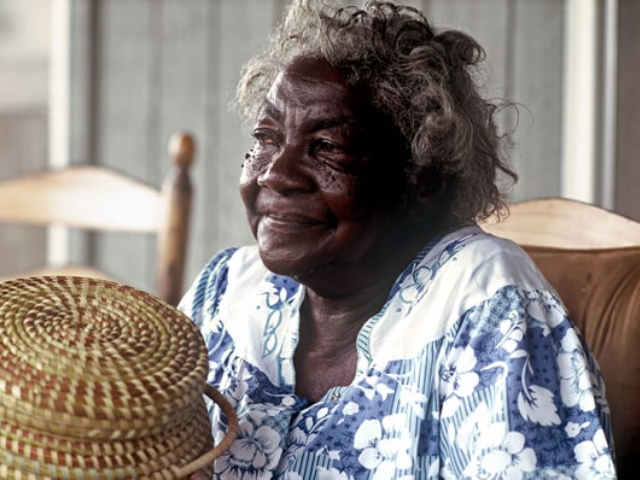
Photograph of National Heritage Fellowship winner Mary Jane Manigault taken in 1984. National Endowment for the Arts.
(1913-2010) While growing up, Mary learned about the tradition of coiled basketry from her parents, Sam and Sally Coakley. Her first item was a hot pad made out of sweetgrass, palmetto, and pine needles for color. The craft of coiled basketry has been practiced in the sea islands off the coast of the southeastern United States since it was brought over by African slaves who introduced specialized agricultural practices and tools, including various kinds of work and winnowing baskets.
Manigault sold her baskets in the open-air Market Square in Charleston. She liked to demonstrate and explain her techniques to interested shoppers, as she twined narrow palmetto strips around bundles of sweetgrass and pine needles. As the basket ages, she said, the pine needles turn brown and contrast with the gold and yellow of the other fibers. Manigault's baskets attained widespread recognition because of the sculptural quality of the forms she created and the imaginative use of natural design and color, never overdecorating, and understanding the value of the plain, unadorned traditional designs.


